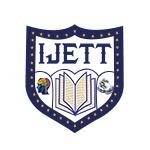Scraping Global Threats in Facebook Through Movement Patterns Generated by Random Walks
Citation
Pratishtha Mishra, Prachi Jain, NabanitaMajumder and Shivani Paul. "Scraping Global Threats in Facebook Through Movement Patterns Generated by Random Walks", International Journal of Engineering Trends and Technology (IJETT), V10(2),85-88 April 2014. ISSN:2231-5381. www.ijettjournal.org. published by seventh sense research group
Abstract
The increased concern of national security agencies due to the occurrences of emerging global threats through open social networks (OSN) has been significant. The risks have occurred in large measure due to explosive growth of social media, which facilitates immediate worldwide engagement. We have studied a set of four schemes based on random walk exploration to crawl across the non-private social data that is readily available on Facebook. Our work is based on tracing emerging global threats on Facebook (OSN).We detect the mood of the Facebook users across a group by random walks with the aim of sampling, collecting and monitoring open information through millions of Facebook messages. This will help government agencies to deal with some anti national movement in the nation.
References
[1] L. Cutillo, R. Molva, and M. Onen, “Analysis of privacy in online social networks from the graph theory perspective,” in Global Telecommunications Conference (GLOBECOM 2011), 2011 IEEE. IEEE, 2011, pp. 1–5.
[2] L. Backstrom and J. Leskovec, “Supervised random walks: predicting and recommending links in social networks,” in Proceedings of the fourth ACM international conference on Web search and data mining. ACM, 2011, pp. 635–644.
[3] J. Ugander, B. Karrer, L. Backstrom, and C. Marlow, “The anatomy of the facebook social graph,” Arxiv preprint arXiv:1111.4503, 2011.
[4] M. Gjoka, M. Kurant, C. Butts, and A. Markopoulou, “Walking in facebook: A case study of unbiased sampling of osns,” in INFOCOM, 2010 Proceedings IEEE. IEEE, 2010, pp. 1–9.
[5] S. Catanese, P. De Meo, E. Ferrara, G. Fiumara, and A. Provetti, “Crawling facebook for social network analysis purposes,” Arxiv preprint arXiv:1105.6307, 2011.
[6] J. Keller, “How The CIA Uses Social Media to Track How People Feel,”[Online] Available: http://www.theatlantic.com/technology/archive/2011/11/how-the-cia-uses-social-media-to-track-how people-feel/247923/.2012 4th Computer Science and Electronic Engineering Conference (CEEC) University of Essex, UK46
Keywords
crawler




 10.14445/22315381/IJETT-V10P216
10.14445/22315381/IJETT-V10P216